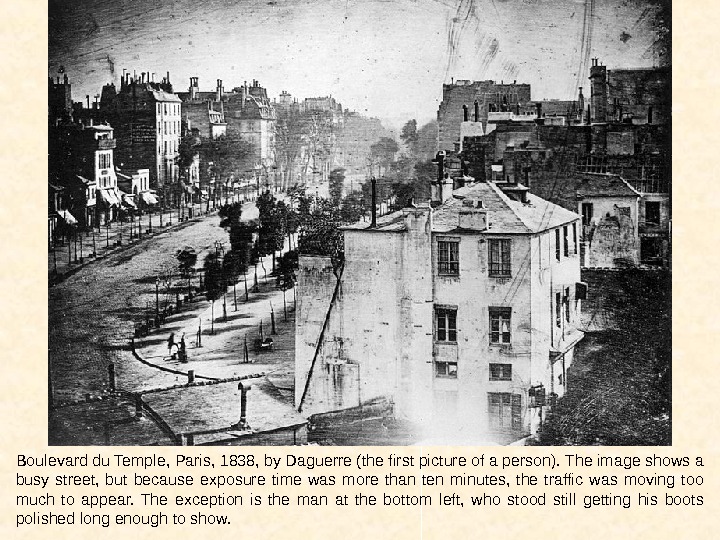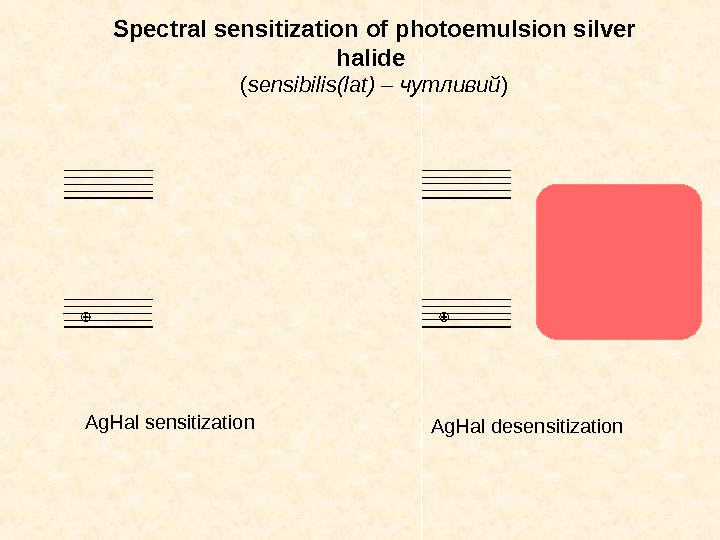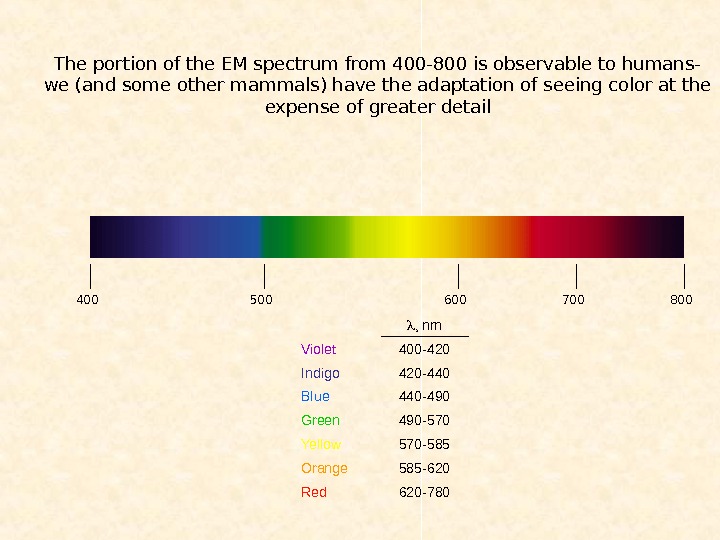Louis-Jacques-Mandé Daguerre (18. 11. 1787 – 10.

































- Размер: 4.3 Mегабайта
- Количество слайдов: 32
Описание презентации Louis-Jacques-Mandé Daguerre (18. 11. 1787 – 10. по слайдам
 Louis-Jacques-Mandé Daguerre (18. 11. 1787 – 10. 07. 1851 )L. Daguerre announced the latest perfection of the Daguerreotype in 1839, with the French Academy of Sciences Ag + I 2 2 Ag. I + h ν Ag + I 2 Ag + Hg Ag (Hg) Ag. I + 2 Na. Cl Na[Ag. Cl 2 ] + Na. IA daguerreotype is one of the earliest photographic processes, in which the image is formed by amalgam L. Daguerre was a French artist and chemist, recognized for his invention of the daguerreotype process of photography. Daguerre was born in Cormeilles-en-Parisis, Val-d’Oise, France. He apprenticed in architecture, theater design, and panoramic painting. Exceedingly adept at his skill for theatrical illusion, he became a celebrated designer for theater and later came to invent the Diorama, which opened in Paris in July 1822.
Louis-Jacques-Mandé Daguerre (18. 11. 1787 – 10. 07. 1851 )L. Daguerre announced the latest perfection of the Daguerreotype in 1839, with the French Academy of Sciences Ag + I 2 2 Ag. I + h ν Ag + I 2 Ag + Hg Ag (Hg) Ag. I + 2 Na. Cl Na[Ag. Cl 2 ] + Na. IA daguerreotype is one of the earliest photographic processes, in which the image is formed by amalgam L. Daguerre was a French artist and chemist, recognized for his invention of the daguerreotype process of photography. Daguerre was born in Cormeilles-en-Parisis, Val-d’Oise, France. He apprenticed in architecture, theater design, and panoramic painting. Exceedingly adept at his skill for theatrical illusion, he became a celebrated designer for theater and later came to invent the Diorama, which opened in Paris in July 1822.
 Boulevard du Temple, Paris, 1838, by Daguerre (the first picture of a person). The image shows a busy street, but because exposure time was more than ten minutes, the traffic was moving too much to appear. The exception is the man at the bottom left, who stood still getting his boots polished long enough to show.
Boulevard du Temple, Paris, 1838, by Daguerre (the first picture of a person). The image shows a busy street, but because exposure time was more than ten minutes, the traffic was moving too much to appear. The exception is the man at the bottom left, who stood still getting his boots polished long enough to show.
 O H OH O O 2 Ag. Br+ 2 2 Ag 2 HBr++2 Ag + Halˉ → 2 Ag + Hal 2 Halˉ + h → Hal • + e ˉ Ag + + e ˉ → Ag Hal • + Hal • → Hal 2 Principle of work of photo graphy s ilver halid e
O H OH O O 2 Ag. Br+ 2 2 Ag 2 HBr++2 Ag + Halˉ → 2 Ag + Hal 2 Halˉ + h → Hal • + e ˉ Ag + + e ˉ → Ag Hal • + Hal • → Hal 2 Principle of work of photo graphy s ilver halid e
 Object Photofilm Ag. Br Photofilm Photopaper Ag. Br. B lack-and-white photography hc h. E Negative photoprocess Positive photoprocess
Object Photofilm Ag. Br Photofilm Photopaper Ag. Br. B lack-and-white photography hc h. E Negative photoprocess Positive photoprocess

 Hermann Wilhelm Vogel (26. 03. 1834 – 17. 12. 1898) H. W. Vogel was a German photochemist and photographer who made key contributions to practical color photography. From 1860 he was a professor at Berlin’s Technische Hochschule (from 1879, the Technical University of Berlin), where he introduced photography as a field of study. In 1873 he discovered how to extend the spectral sensitivity of photographic emulsions (which until then were then only sensitive to blue and UV light) to green light by adding dyes. By 1884 he had discovered how to extend the sensitivity into the orange. However the achievement of a fully panchromatic response, into the red, had to wait until fresh dye-discoveries, in the early 1900 s, shortly after his death. Die chemischen Wirkungen des Lichts und die Photographie (2. Aufl. , Leipzig 1883)
Hermann Wilhelm Vogel (26. 03. 1834 – 17. 12. 1898) H. W. Vogel was a German photochemist and photographer who made key contributions to practical color photography. From 1860 he was a professor at Berlin’s Technische Hochschule (from 1879, the Technical University of Berlin), where he introduced photography as a field of study. In 1873 he discovered how to extend the spectral sensitivity of photographic emulsions (which until then were then only sensitive to blue and UV light) to green light by adding dyes. By 1884 he had discovered how to extend the sensitivity into the orange. However the achievement of a fully panchromatic response, into the red, had to wait until fresh dye-discoveries, in the early 1900 s, shortly after his death. Die chemischen Wirkungen des Lichts und die Photographie (2. Aufl. , Leipzig 1883)
 The first synthetic organic dye – Perkin’s Mauveine (1856 ) The first cyanine dye – Cyanine (Quinoline Blue) was also synthesized in
The first synthetic organic dye – Perkin’s Mauveine (1856 ) The first cyanine dye – Cyanine (Quinoline Blue) was also synthesized in
 300400500600700800 0 1 2 3 105 (Lmol 1 cm 1) (nm)λ max = 453 nm; ε = 137000 (n-hexane) λ max = 758 nm; ε = 305000 (CH 2 Cl 2 ) λ max = 417 nm; ε = 112000 (Me. OH) 460 nm; ε = 33300 (Me. OH)
300400500600700800 0 1 2 3 105 (Lmol 1 cm 1) (nm)λ max = 453 nm; ε = 137000 (n-hexane) λ max = 758 nm; ε = 305000 (CH 2 Cl 2 ) λ max = 417 nm; ε = 112000 (Me. OH) 460 nm; ε = 33300 (Me. OH)
 -5. 9 e. VAg. Hal -3. 3 e. V h 1 h 2 HOMO LUMO Dye -5. 9 e. V Ag. Hal-3. 3 e. V h 1 h 2 HOMOLUMO Dye Ag. Hal sensitization Ag. Hal de sensitization. S pectral sensitization of photoemulsion s ilver halid e ( sensibilis(lat) – чут л ивий )
-5. 9 e. VAg. Hal -3. 3 e. V h 1 h 2 HOMO LUMO Dye -5. 9 e. V Ag. Hal-3. 3 e. V h 1 h 2 HOMOLUMO Dye Ag. Hal sensitization Ag. Hal de sensitization. S pectral sensitization of photoemulsion s ilver halid e ( sensibilis(lat) – чут л ивий )

 4006008001000 0 1 2 3 105 (Lmol 1 cm 1) (nm)
4006008001000 0 1 2 3 105 (Lmol 1 cm 1) (nm)
 4006008001000 0 1 2 10 5, L mol 1 cm 1 , nm NMe Ph + Cl. O 4 _ N Me + Cl. O 4 _
4006008001000 0 1 2 10 5, L mol 1 cm 1 , nm NMe Ph + Cl. O 4 _ N Me + Cl. O 4 _
 400500600700 0 1 2 10 5, Lmol 1 cm 1 , nm
400500600700 0 1 2 10 5, Lmol 1 cm 1 , nm
 Förster — Dewar — Knott rule (FDK rule)
Förster — Dewar — Knott rule (FDK rule)
 λ max = 558 nmλ max = 495 nm λ max = 586 nm λ max = 411 nm λ max = 596 nmλ max = 558 nm
λ max = 558 nmλ max = 495 nm λ max = 586 nm λ max = 411 nm λ max = 596 nmλ max = 558 nm

 E n = 1 n = 2 n = 3 n = 4 n = 5 HOMO LUMO
E n = 1 n = 2 n = 3 n = 4 n = 5 HOMO LUMO
 Electron-donor ability: — strong- -medium- -weak- Dependences of total charges distribution in end groups ( Σ q N ) and polymethine chain ( Σ q C ) on electron-donor ability of end groups (Het) and chain length ( n )
Electron-donor ability: — strong- -medium- -weak- Dependences of total charges distribution in end groups ( Σ q N ) and polymethine chain ( Σ q C ) on electron-donor ability of end groups (Het) and chain length ( n )
 4006008001000 0 1 2 3 105 (Lmol 1 cm 1) 5432 1 (nm) Electronic absorption spectra of dyes 1 -5 in CH 2 Cl 2 and DM
4006008001000 0 1 2 3 105 (Lmol 1 cm 1) 5432 1 (nm) Electronic absorption spectra of dyes 1 -5 in CH 2 Cl 2 and DM
 -0. 3 -0. 2 -0. 1 0. 00. 10. 2 charge 6008001000 0 1 2 105 (Lmol 1 cm 1) (nm)
-0. 3 -0. 2 -0. 1 0. 00. 10. 2 charge 6008001000 0 1 2 105 (Lmol 1 cm 1) (nm)

 The portion of the EM spectrum from 400 -800 is observable to humans- we (and some other mammals) have the adaptation of seeing color at the expense of greater detail 400 500 600 800700 , nm 620 -780 Red 585 -620 Orange 570 -585 Yellow 490 -570 Green 440 -490 Blue 420 -440 Indigo 400 -420 Violet
The portion of the EM spectrum from 400 -800 is observable to humans- we (and some other mammals) have the adaptation of seeing color at the expense of greater detail 400 500 600 800700 , nm 620 -780 Red 585 -620 Orange 570 -585 Yellow 490 -570 Green 440 -490 Blue 420 -440 Indigo 400 -420 Violet
 A dditive method of colours synthesis
A dditive method of colours synthesis
 Subtractive colour model (ideal CMY-scheme) B RG
Subtractive colour model (ideal CMY-scheme) B RG
 James Clerk Maxwell ( 13. 06. 1831– 05. 11. 1879) J. C. Maxwell was a Scottish theoretical physicist and mathematician. His most important achievement was classical electromagnetic theory. Maxwell contributed to the area of optics and colour vision, and is credited with the discovery that colour photographs could be formed using red, green, and blue filters (in 1861) The first permanent colour image, taken by Maxwell in 1861 (a tartan ribbon)
James Clerk Maxwell ( 13. 06. 1831– 05. 11. 1879) J. C. Maxwell was a Scottish theoretical physicist and mathematician. His most important achievement was classical electromagnetic theory. Maxwell contributed to the area of optics and colour vision, and is credited with the discovery that colour photographs could be formed using red, green, and blue filters (in 1861) The first permanent colour image, taken by Maxwell in 1861 (a tartan ribbon)
 Additive principle of colour photography
Additive principle of colour photography
 Subtractive method of colours synthesis
Subtractive method of colours synthesis
 Subtractive method of colours synthesis
Subtractive method of colours synthesis
 350 400 450 500 550 600 650 700 S (nm) 350 400 450 500 550 600 650 700 S (nm)Curves of spectral sensitivity of colour negative photo film to blue , green and red ray s
350 400 450 500 550 600 650 700 S (nm) 350 400 450 500 550 600 650 700 S (nm)Curves of spectral sensitivity of colour negative photo film to blue , green and red ray s
 R 2 N N H 2 + Ag. Hal R 2 N N H 2+. + Ag Hal _ + R 2 N N H 2 + Ag. Hal R 2 N N H+. + Ag Hal _ ++ + H + O ONH R ‘ ‘ R ‘ + N R 2 N H OR ‘ O N HR ‘ ‘ Leuco base N R 2 N H OR ‘ O N HR ‘ ‘ + + R 2 N N H 2 + H +QDI QDI + N R 2 N OR ‘ O N HR ‘ ‘ Azomethine yellow
R 2 N N H 2 + Ag. Hal R 2 N N H 2+. + Ag Hal _ + R 2 N N H 2 + Ag. Hal R 2 N N H+. + Ag Hal _ ++ + H + O ONH R ‘ ‘ R ‘ + N R 2 N H OR ‘ O N HR ‘ ‘ Leuco base N R 2 N H OR ‘ O N HR ‘ ‘ + + R 2 N N H 2 + H +QDI QDI + N R 2 N OR ‘ O N HR ‘ ‘ Azomethine yellow
 +QDI N NR’R» ON H NR 2 Azomethine purple N NR’R» ONNR 2 +QDI NR 2 N H OH OH OH NR 2 N O Indoaniline blue
+QDI N NR’R» ON H NR 2 Azomethine purple N NR’R» ONNR 2 +QDI NR 2 N H OH OH OH NR 2 N O Indoaniline blue
 Photographed object Negative film after development Colour of negative film Colours on photo paper after exposure and development Colours of photo paper. Subtractive principle of colour photography
Photographed object Negative film after development Colour of negative film Colours on photo paper after exposure and development Colours of photo paper. Subtractive principle of colour photography

